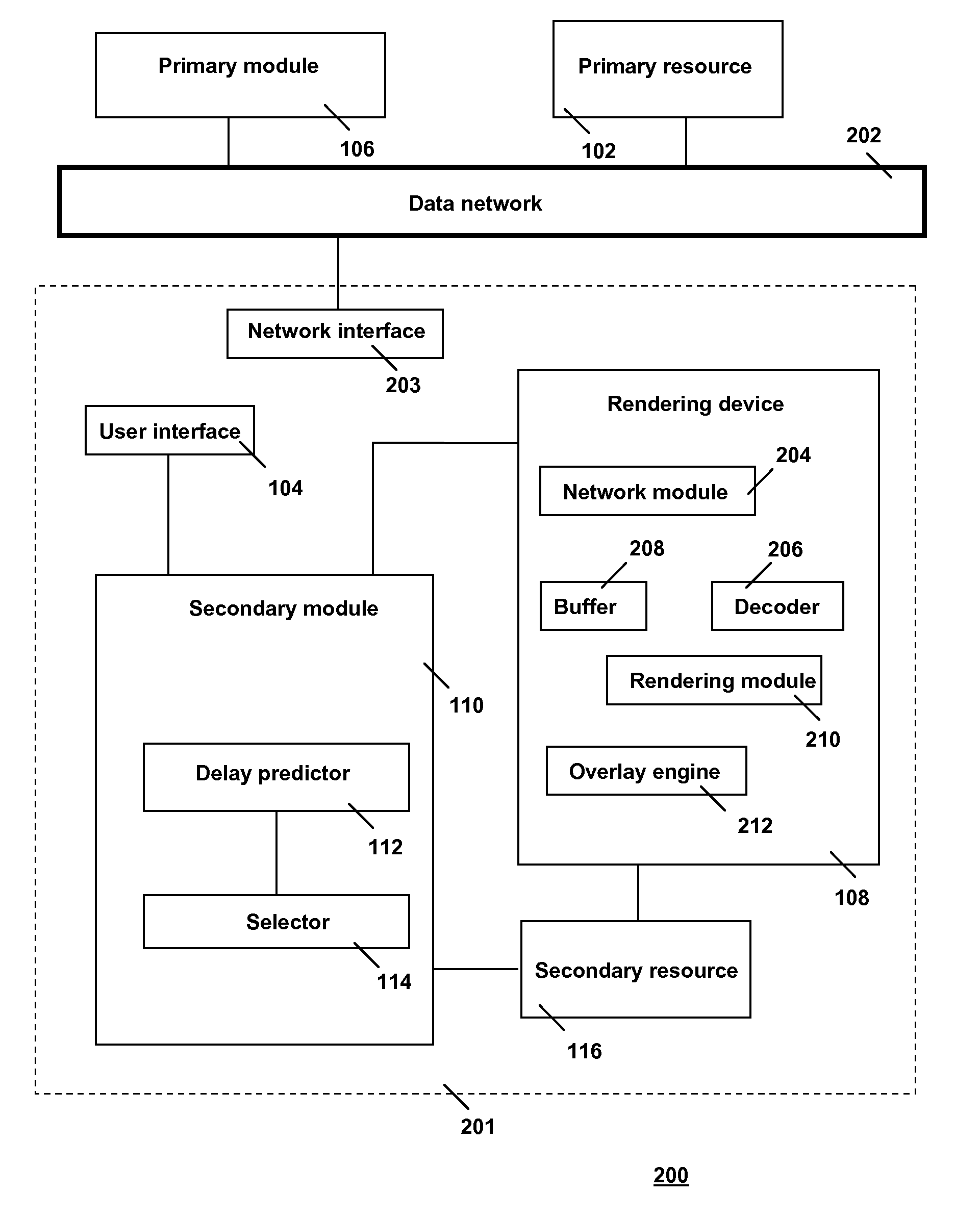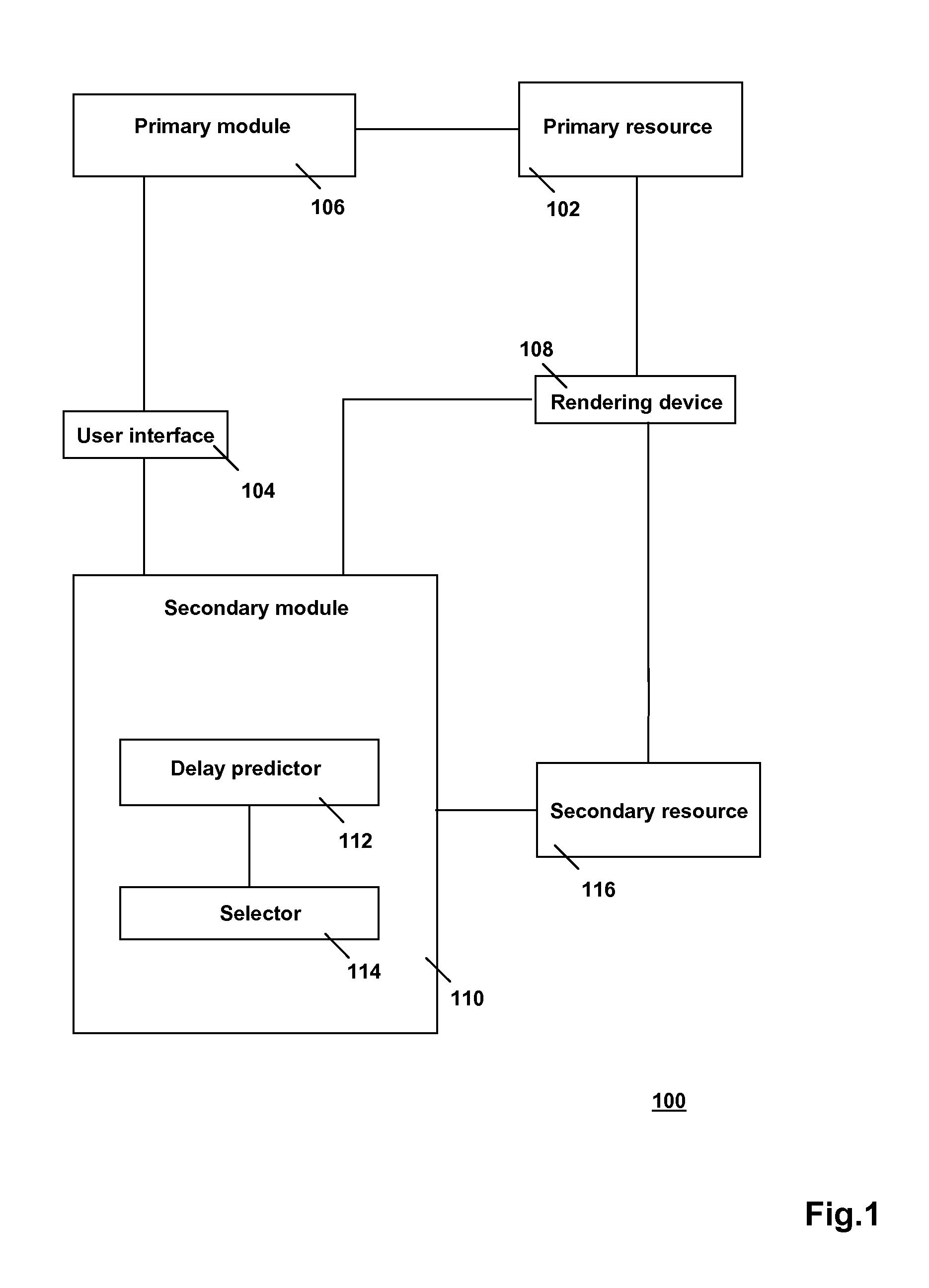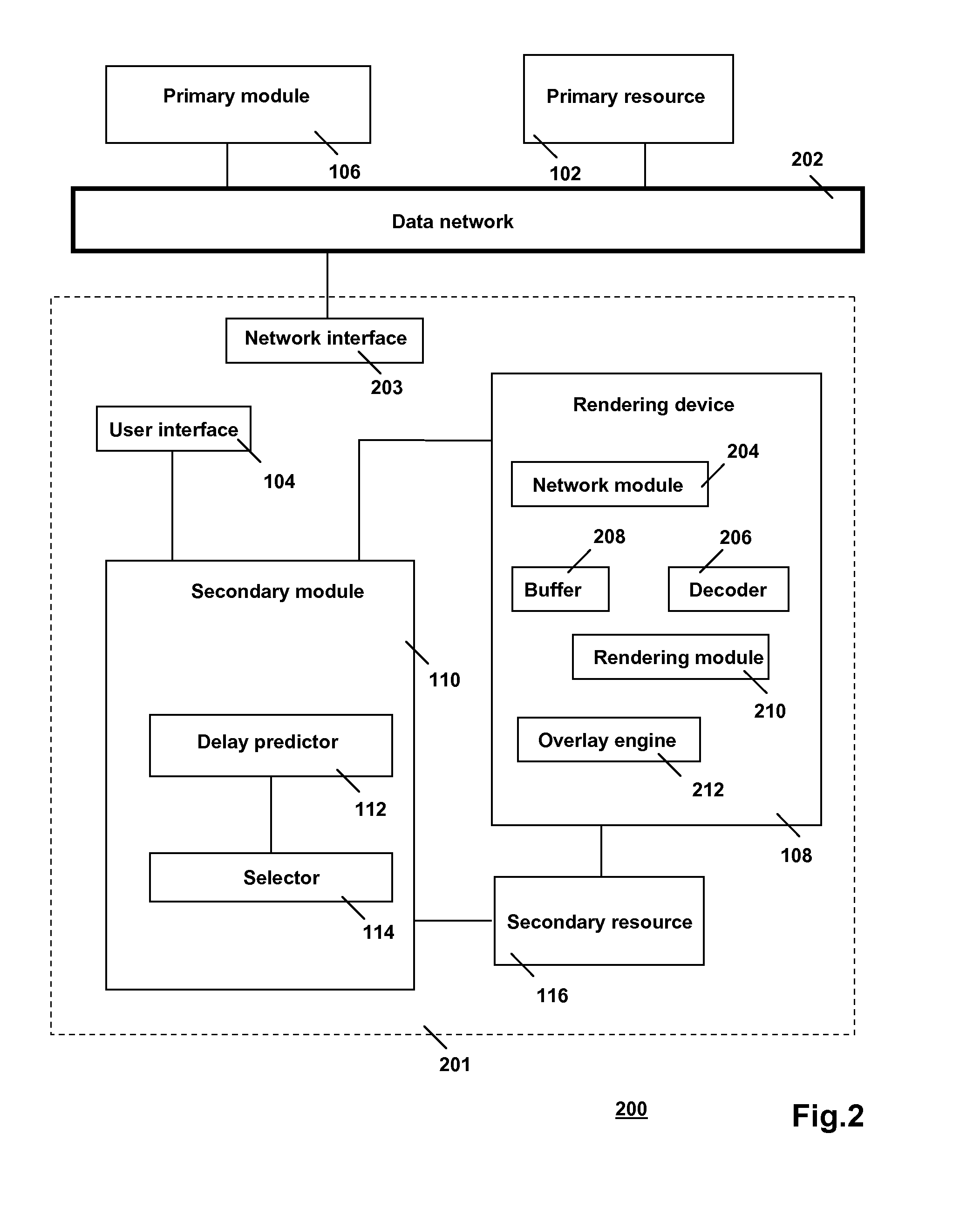Playing Out Interludes Based on Predicted Duration of Channel-Switching Delay or of Invoked Pause
- Summary
- Abstract
- Description
- Claims
- Application Information
AI Technical Summary
Benefits of technology
Problems solved by technology
Method used
Image
Examples
Embodiment Construction
Generic Concept
[0035]FIG. 1 is a block diagram for illustrating the functionalities of a generic data processing system 100 in the invention. System 100 provides, to an end-user, access to a plurality of primary data items, e.g., computer files, representative of a plurality of primary content information items when displayed or otherwise made user-perceptible. Within this context, a primary content formation item is, e.g., a program on a channel of a digital TV service or of a digital audio service, a web page, a software application program, etc. The primary data items are supplied from a primary resource 102. The primary data items have been prepared in advance and have been stored, or they are generated in real-time as in a live broadcast.
[0036]System 100 has a user interface 104 for enabling a user to enter user input into system 100. System further comprises a primary module 106 that is coupled between user interface 104 and primary resource 102. Primary module 106 is operativ...
PUM
 Login to View More
Login to View More Abstract
Description
Claims
Application Information
 Login to View More
Login to View More - R&D
- Intellectual Property
- Life Sciences
- Materials
- Tech Scout
- Unparalleled Data Quality
- Higher Quality Content
- 60% Fewer Hallucinations
Browse by: Latest US Patents, China's latest patents, Technical Efficacy Thesaurus, Application Domain, Technology Topic, Popular Technical Reports.
© 2025 PatSnap. All rights reserved.Legal|Privacy policy|Modern Slavery Act Transparency Statement|Sitemap|About US| Contact US: help@patsnap.com



